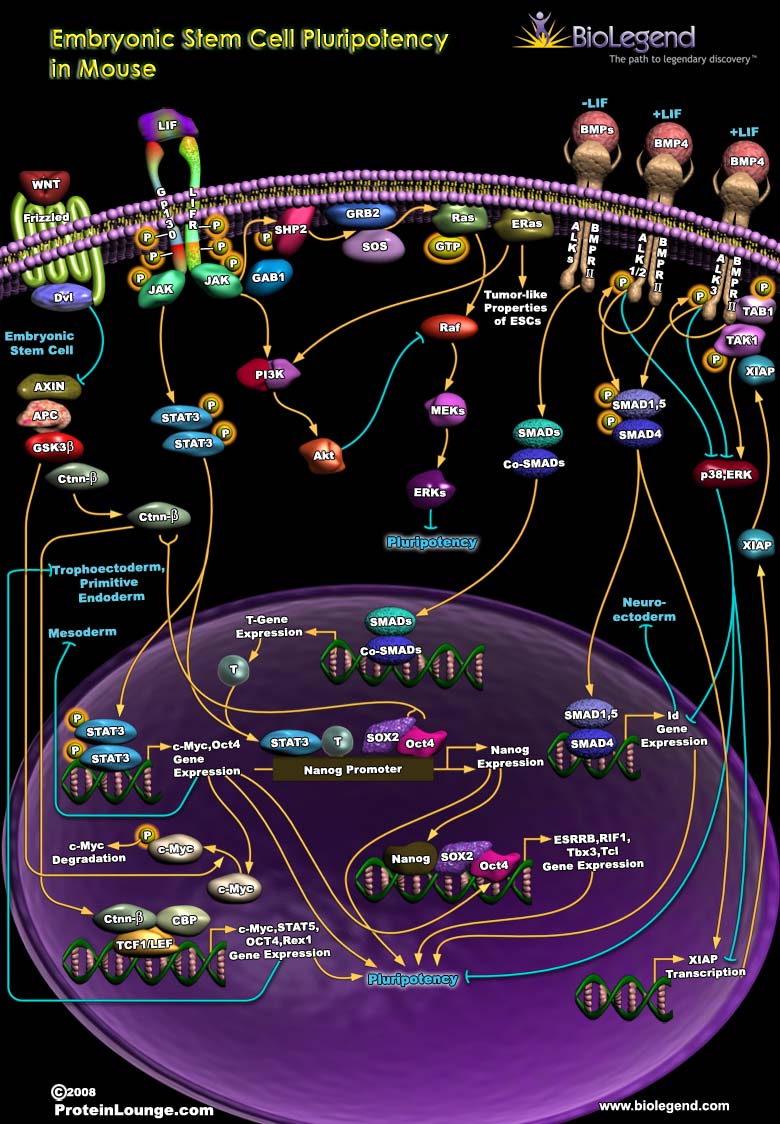Embryonic Stem Cell Pluripotency in Mouse
Mouse embryonic stem cells (ESCs) maintain their pluripotency through a variety of molecular signaling pathways. External factors like LIF, BMPs, and WNT proteins activate important signaling cascades including JAK/STAT, SMAD, and β-catenin pathways, respectively. Ultimately, these pathways lead to the expression or translocation of transcription factors in the nucleus. Once in the nucleus, SMAD proteins can bind to genes that maintain pluripotency or initiate differentiation into the neuro-ectoderm. Stabilization of β-catenin or phosphorylation and activation of STAT3 results in the modulation of critical transcription factors including c-Myc, Sox2, and Oct4. Expression levels of these proteins help to determine the fate of the ESC. For example, they can bind to the Nanog promoter to induce Nanog expression to maintain pluripotency. However, in the presence of other factors, overexpression of Oct4 can also lead to differentiation into the mesoderm or endoderm.
Click on the poster below to view the interactive version.
 Login / Register
Login / Register 








Follow Us